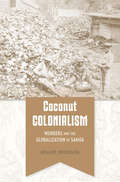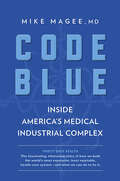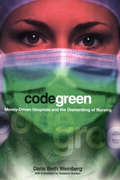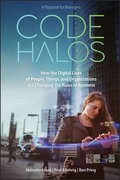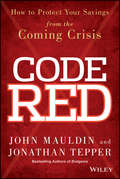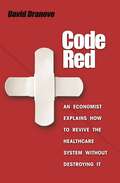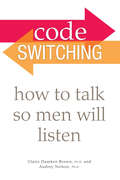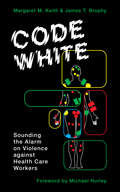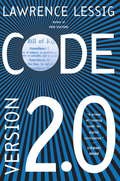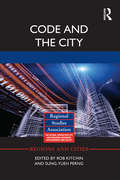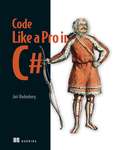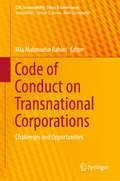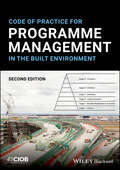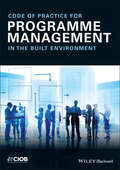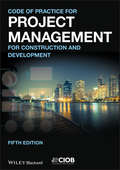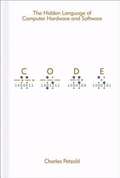- Table View
- List View
Coco Chanel: From Fashion Icon to Nazi Agent
by Geoffrey G. Jones Emily GrandjeanCase describes the career of the iconic French fashion designer Coco Chanel who created a transformational business during the first half of the twentieth century. The case describes how she leveraged relationships to build her fashion business and legendary luxury brand based on understated elegance. Chanel famous little black dress was accompanied by many other innovations including the use of jersey as material and her development of the Chanel No. 5 perfume. The case pays close attention to the importance of Chanel's networks among artists and European high society. It explores how she embraced the Anti-Semitism widely found in that society at that time period. During World War 2 Chanel lived in the Ritz hotel in Paris in occupied France in a relationship with a high-ranking German intelligence officer. She herself became an intelligence operative for Nazi Germany. The case ends with Chanel in Switzerland in 1945 after she had left France after the Liberation by Allied forces. This case can be used to explore multiple issues including creating and building an iconic fashion brand; female entrepreneurship; and ethical responsibility of business.
Cocoa (Resources)
by Kristy LeissleChocolate has long been a favorite indulgence. But behind every chocolate bar we unwrap, there is a world of power struggles and political maneuvering over its most important ingredient: cocoa. In this incisive book, Kristy Leissle reveals how cocoa, which brings pleasure and wealth to relatively few, depends upon an extensive global trade system that exploits the labor of five million growers, as well as countless other workers and vulnerable groups. The reality of this dramatic inequity, she explains, is often masked by the social, cultural, emotional, and economic values humans have placed upon cocoa from its earliest cultivation in Mesoamerica to the present day. Tracing the cocoa value chain from farms in Africa, Asia, Latin America, and the Caribbean, through to chocolate factories in Europe and North America, Leissle shows how cocoa has been used as a political tool to wield power over others. Cocoa's politicization is not, however, limitless: it happens within botanical parameters set by the crop itself, and the material reality of its transport, storage, and manufacture into chocolate. As calls for justice in the industry have grown louder, Leissle reveals the possibilities for and constraints upon realizing a truly sustainable and fulfilling livelihood for cocoa growers, and for keeping the world full of chocolate.
Coconut Colonialism: Workers and the Globalization of Samoa (Harvard historical studies)
by Holger DroesslerA new history of globalization and empire at the crossroads of the Pacific. Located halfway between Hawai‘i and Australia, the islands of Samoa have long been a center of Oceanian cultural and economic exchange. Accustomed to exercising agency in trade and diplomacy, Samoans found themselves enmeshed in a new form of globalization after missionaries and traders arrived in the middle of the nineteenth century. As the great powers of Europe and America competed to bring Samoa into their orbits, Germany and the United States eventually agreed to divide the islands for their burgeoning colonial holdings. In Coconut Colonialism, Holger Droessler examines the Samoan response through the lives of its workers. Ordinary Samoans—some on large plantations, others on their own small holdings—picked and processed coconuts and cocoa, tapped rubber trees, and built roads and ports that brought cash crops to Europe and North America. At the same time, Samoans redefined their own way of being in the world—what Droessler terms “Oceanian globality”—to challenge German and American visions of a global economy that in fact served only the needs of Western capitalism. Through cooperative farming, Samoans contested the exploitative wage-labor system introduced by colonial powers. The islanders also participated in ethnographic shows around the world, turning them into diplomatic missions and making friends with fellow colonized peoples. Samoans thereby found ways to press their own agendas and regain a degree of independence. Based on research in multiple languages and countries, Coconut Colonialism offers new insights into the global history of labor and empire at the dawn of the twentieth century.
Cod Fisheries: The History of an International Economy
by Harold Innis<p>The Cod Fisheries, originally published in 1938 and revised and reissued in 1954, presented a new interpretation of European and North American history that has since become a classic. With that rare skill he possessed of weaving together the various strands of a complex and difficult historical situation, Innis showed how the exploitation of the cod fisheries from the fifteenth century to the twentieth has been closely tied up with the whole economic and political development of Western Europe and North America. <p>The relationship of the fisheries to the maritime greatness of Britain and to the growth of New England as an important commercial power is particularly stressed; and in the examination of the conflicts growing up about this industry are revealed the forces underlying the struggle between Britain and France for control of the new world, and the forces which led to the collapse of thye British Empire in America and the rise of an independent new world political power. The political struggles with Nova Scotia and the long conflict with the United States, continuing far into the nineteenth century, are examined in careful detail.</p>
Code Blue: A Textbook Novel on Managed Care (Third Edition)
by Richard E. Mcdermott Kevin StocksWhat you are about to read represents a new way of teaching technical material. The book tells the story of a CPA who accepts a consulting job for a community hospital, a job that involves him in romance, mystery, murder, intrigue, and... managed care!
Code Blue: Inside America's Medical Industrial Complex
by Mike MageeThis “searing and persuasive exposé of the American health care system” demonstrates the disastrous consequences of putting profit before people (Kirkus Reviews, starred review).In this timely and important book, Mike Magee, M.D., sends out a “Code Blue” —an urgent medical emergency—for the American medical industry itself. A former hospital administrator and Pfizer executive, he has spent years investigating the pillars of our health system: Big Pharma, insurance companies, hospitals, the American Medical Association, and anyone affiliated with them. Code Blue is a riveting, character-driven narrative that draws back the curtain on the giant industry that consumes one out of every five American dollars. Making clear for the first time the mechanisms, greed, and collusion by which our medical system was built over the last eight decades. He persuasively argues for a single-payer, multi-plan insurance arena of the kind enjoyed by every other major developed nation.
Code Green: Money-Driven Hospitals and the Dismantling of Nursing (The Culture and Politics of Health Care Work)
by Dana Beth WeinbergWe are on the verge of the nation's worst nursing shortage in history. Dedicated nurses are leaving hospitals in droves, and there are not enough new recruits to the profession to meet demand. Even hospitals that were once very highly regarded for the quality of their nursing care, such as Boston's Beth Israel Deaconess Medical Center, now struggle to fill vacant positions. What happened? Dana Beth Weinberg argues that hospital restructuring in the 1990s is to blame. In their attempts to retain profit margins or even just to stay afloat, hospitals adopted a common set of practices to cut costs and increase revenues. Many strategies squeezed greater productivity out of nurses and other hospital workers. Nurses' workloads increased to the point that even the most skilled nurses questioned whether they could provide minimal, safe care to patients. As hospitals hemorrhaged money, it seemed that no one—not hospital administrators, not doctors—felt they could afford to listen to nurses.Through a careful look at the effects of the restructuring strategies chosen and implemented by Beth Israel Deaconess Medical Center, the author examines management's efforts to balance service and survival. By showing the effects of hospital restructuring on nurses' ability to plan, evaluate, and deliver excellent care, Weinberg provides a stinging indictment of standard industry practices that underestimate the contribution nurses make both to hospitals and to patient care.
Code Halos: How the Digital Lives of People, Things, and Organizations are Changing the Rules of Business
by Paul Roehrig Ben Pring Malcolm FrankHarness "Code Halos" to gain competitive advantage in the digital era Amazon beating Borders, Netflix beating Blockbuster, Apple beating Kodak, and the rise of companies like Google, LinkedIn, and Pandora are not isolated or random events. Today's outliers in revenue growth and value creation are winning with a new set of rules. They are dominating by managing the information that surrounds people, organizations, processes, and products—what authors Malcolm Frank, Paul Roehrig, and Ben Pring call Code Halos. This is far beyond “Big Data” and analytics. Code Halos spark new commercial models that can dramatically flip market dominance from industry stalwarts to challengers. In this new book, the authors show leaders how digital innovators and traditional companies can build Code Halo solutions to drive success. The book: Examines the explosion of digital information that now surrounds us and describes the profound impact this is having on individuals, corporations, and societies; Shows how the Crossroads Model can help anticipate and navigate this market shift; Provides examples of traditional firms already harnessing the power of Code Halos including GE's "Brilliant Machines," Disney's theme park "Magic Band," and Allstate's mobile devices and analytics that transform auto insurance. With reasoned insight, new data, real-world cases, and practical guidance, Code Halos shows seasoned executives, entrepreneurs, students, line-of-business owners, and technology leaders how to master the new rules of the Code Halo economy.
Code Red
by John Mauldin Jonathan TepperWall Street Journal BestsellerValuable insights on monetary policies, their impact on your financial future, and how to protect against themWritten by the New York Times bestselling author team of John Mauldin and Jonathan Tepper, Code Red spills the beans on the central banks in the U.S., U.K., E.U., and Japan and how they've rigged the game against the average saver and investor. More importantly, it shows you how to protect your hard-earned cash from the bankers' disastrous monetary policies and how to come out a winner in the irresponsible game of chicken they're playing with the global financial system.From quantitative easing to zero interest rate policies, ZIRP to the impending currency wars, runaway inflation to GDP targeting, authors Mauldin and Tepper achieve the impossible by not only explaining global monetary policy and its consequences in plain English, but also making it compelling reading.Outlines time-tested strategies for surviving and thriving in these tumultuous timesAddresses how issues such as quantitative easing, financial repression, currency wars, bubble economies, and inflation impact our everyday lives as well as our financial futureWritten by a team of bestselling authors and experts in this dynamic fieldHow did we get here and where are we headed? What can you do to insulate yourself against, and profit from, economic upheaval and secure your financial future? Find out in Code Red.
Code Red: An Economist Explains How to Revive the Healthcare System without Destroying It
by David DranoveThe U.S. healthcare system is in critical condition--but this should come as a surprise to no one. Yet until now the solutions proposed have been unworkable, pie-in-the-sky plans that have had little chance of becoming law and even less of succeeding. In Code Red, David Dranove, one of the nation's leading experts on the economics of healthcare, proposes a set of feasible solutions that address access, efficiency, and quality. Dranove offers pragmatic remedies, some of them controversial, all of them crucially needed to restore the system to vitality. He pays special attention to the plight of the uninsured, and proposes a new direction that promises to make premier healthcare for all Americans a national reality. Setting his story against the backdrop of healthcare in the United States from the early twentieth century to the present day, he reveals why a century of private and public sector efforts to reform the ailing system have largely failed. He draws on insights from economics to diagnose the root causes of rising costs and diminishing access to quality care, such as inadequate information, perverse incentives, and malfunctioning insurance markets. Dranove describes the ongoing efforts to revive the system--including the rise of consumerism, the quality movement, and initiatives to expand access--and argues that these efforts are doomed to fail without more fundamental, systemic, market-based reforms. Code Red lays the foundation for a thriving healthcare system and is indispensable for anyone trying to make sense of the thorny issues of healthcare reform.
Code Switching: How to Talk So Men Will Listen
by Audrey Nelson Claire Damken BrownMars and Venus head to work... Day-to-day, face-to-face workplace communication between men and women is often dysfunctional because each gender employs different speech patterns. When careers and paychecks are on the line, clear communication is crucial-from the mailroom to the boardroom. Code Switching explains what to say, how to say it, how to be taken seriously, and how to act while speaking with the opposite sex for maximum effectiveness in the workplace. Included are: How men and women manage conversation, and the value of "chitchat" prior to a meeting. How men use language to impart information and women use language to build or indicate relationship. How men use e-mail to emphasize control while women use it to share and build rapport. How women can use language to build their credibility. How humor is used as a power play, to build territory, or to exclude others. How gender talk creates and shapes work relationships.
Code White: Sounding the Alarm on Violence against Health Care Workers
by James T. Brophy Margaret M. KeithWhen health care workers call a Code White, it’s an emergency response for a violent incident: a call for help. But it’s one that goes unanswered in hospitals, clinics, and long-term care homes across the country. Code White exposes a shocking epidemic of violence that’s hidden in plain sight, one in which workers are bruised, battered, assaulted, and demeaned, but carry on in silence, with little recourse or support. Researchers Margaret M. Keith and James T. Brophy lay bare the stories of over one hundred nurses and personal support workers, aides and porters, clerical workers and cleaners. The nightmarish experiences they relate are not one-off incidents, but symptoms of deep systemic flaws that have transformed health care into one of the most dangerous occupational sectors in Canada. The same questions echo in the wake of each and every brutal encounter: Is violence and trauma really just “part of the job”? Why is this going underreported and unchecked? What needs to be done, and how?
Code and Other Laws of Cyberspace, Version 2.0: And Other Laws of Cyberspace, Version 2.0
by Lawrence LessigCountering the common belief that cyberspace cannot be regulated, Lessig (Harvard Law School) argues that if anything, commerce is forging the Internet into a highly regulated domain. But neither direction is inevitable; it is up to citizens to decide what values and trade-offs of control hardware and software code is to embody.
Code and the City (Regions and Cities)
by Rob Kitchin Sung-Yueh PerngSoftware has become essential to the functioning of cities. It is deeply embedded into the systems and infrastructure of the built environment and is entrenched in the management and governance of urban societies. Software-enabled technologies and services enhance the ways in which we understand and plan cities. It even has an effect on how we manage urban services and utilities. Code and the City explores the extent and depth of the ways in which software mediates how people work, consume, communication, travel and play. The reach of these systems is set to become even more pervasive through efforts to create smart cities: cities that employ ICTs to underpin and drive their economy and governance. Yet, despite the roll-out of software-enabled systems across all aspects of city life, the relationship between code and the city has barely been explored from a critical social science perspective. This collection of essays seeks to fill that gap, and offers an interdisciplinary examination of the relationship between software and contemporary urbanism. This book will be of interest to those researching or studying smart cities and urban infrastructure.
Code like a Pro in C#
by Jort RodenburgBuild on your existing programming skills and upskill to professional-level C# programming. Summary In Code Like A Pro in C# you will learn: Unit testing and test-driven development Refactor a legacy .NET codebase Principles of clean code Essential backend architecture skills Query and manipulate databases with LINQ and Entity Framework Core Critical business applications worldwide are written in the versatile C# language and the powerful .NET platform, running on desktops, cloud systems, and Windows or Linux servers. Code Like a Pro in C# makes it easy to turn your existing abilities in C# or another OO language (such as Java) into practical C# mastery. There&’s no &“Hello World&” or Computer Science 101 basics—you&’ll learn by refactoring an out-of-date legacy codebase, using new techniques, tools, and best practices to bring it up to modern C# standards. Purchase of the print book includes a free eBook in PDF, Kindle, and ePub formats from Manning Publications. About the technology You know the basics, now get ready for the next step! Pro-quality C# code is efficient, clean, and fast. Whether you&’re building user-facing business applications or writing data-intensive backend services, the experience-based, practical techniques in this book will take your C# skills to a new level. About the book Code Like a Pro in C# teaches you to how write clean C# code that&’s suitable for enterprise applications. In this book, you&’ll refactor a legacy codebase by applying modern C# techniques. You&’ll explore tools like Entity Framework Core, design techniques like dependency injection, and key practices like testing and clean coding. It&’s a perfect path to upgrade your existing C# skills or shift from another OO language into C# and the .NET ecosystem. What's inside Unit testing and test-driven development Refactor a legacy .NET codebase Principles of clean code Query and manipulate databases with LINQ and Entity Framework Core About the reader For developers experienced with object-oriented programming. No C# experience required. About the author Jort Rodenburg is a software engineer who has taught numerous courses on getting up to speed with C# and .NET. Table of Contents PART 1 USING C# AND .NET 1 Introducing C# and .NET 2 .NET and how it compiles PART 2 THE EXISTING CODEBASE 3 How bad is this code? 4 Manage your unmanaged resources! PART 3 THE DATABASE ACCESS LAYER 5 Setting up a project and database with Entity Framework Core PART 4 THE REPOSITORY LAYER 6 Test-driven development and dependency injection 7 Comparing objects 8 Stubbing, generics, and coupling 9 Extension methods, streams, and abstract classes PART 5 THE SERVICE LAYER 10 Reflection and mocks 11 Runtime type checking revisited and error handling 12 Using IAsyncEnumerable and yield return PART 6 THE CONTROLLER LAYER 13 Middleware, HTTP routing, and HTTP responses 14 JSON serialization/deserialization and custom model binding
Code of Conduct on Transnational Corporations: Challenges and Opportunities (CSR, Sustainability, Ethics & Governance)
by Mia Mahmudur RahimThis book explores the challenges and opportunities presented by the formulation of a global code of conduct for transnational corporations. It assesses the current state of research on global regulations intended to enhance the social responsibility of transnational corporations, and provides a platform for future research. In particular the book examines frameworks and instruments for regulating social responsibility, reviews recent developments concerning the proposed UN Code of Conduct on Transnational Corporations, and provides insights into international civil society groups’ movements in pursuit of a code of conduct. In a separate chapter the book discusses theoretical issues in regulating transnational corporations, and investigates their legitimacy and behavioral dynamics. In closing, the book discusses alternatives to a global code of conduct, the impact of sovereign power in the era of globalization, “soft regulations,” and the feasibility and normative efficacy of enforcing regulations.
Code of Conduct on Transnational Corporations: Challenges and Opportunities (CSR, Sustainability, Ethics & Governance)
by Mia Mahmudur RahimThis book explores the challenges and opportunities presented by the formulation of a global code of conduct for transnational corporations. It assesses the current state of research on global regulations intended to enhance the social responsibility of transnational corporations, and provides a platform for future research. In particular the book examines frameworks and instruments for regulating social responsibility, reviews recent developments concerning the proposed UN Code of Conduct on Transnational Corporations, and provides insights into international civil society groups’ movements in pursuit of a code of conduct. In a separate chapter the book discusses theoretical issues in regulating transnational corporations, and investigates their legitimacy and behavioral dynamics. In closing, the book discusses alternatives to a global code of conduct, the impact of sovereign power in the era of globalization, “soft regulations,” and the feasibility and normative efficacy of enforcing regulations.
Code of Practice for Programme Management in the Built Environment
by CIOB (The Chartered Institute of Building)CODE OF PRACTICE FOR PROGRAMME MANAGEMENT IN THE BUILT ENVIRONMENT Manage a construction programme from start to finish with this up-to-date guide The maturation and proliferation of project management principles has been one of the most important stories in recent business history. So widely has project management spread throughout the corporate world that it has now given way to a similar discipline, programme management, designed to align, coordinate and manage a number of related projects as a whole. In the construction industry particularly, programme management can deliver benefits that would not have been possible to realise had individual projects been managed independently. Produced by the Chartered Institute of Building (CIOB), the revised Code of Practice for Programme Management in the Built Environment provides a comprehensive overview of the tools required to deliver such benefits, and how they are applied in construction programmes. A natural complement to the CIOB’s popular Code of Practice for Project Management for the Built Environment, it is now fully updated to reflect new insights and best practices. Readers of the second edition of Code of Practice for Programme Management in the Built Environment will find: Theoretical and practical insights derived from research and experience Coverage of setting up programmes successfully so that teams feel confident to deliver the final outcome Guidelines for implementing programme management for the built environment Code of Practice for Programme Management in the Built Environment is ideal for programme management and project management professionals involved in this industry and in particular, contractors and client organisations, as well as for advanced undergraduate and postgraduate students in construction project management and other related disciplines. The Chartered Institute of Building is the world’s largest professional body for construction management and leadership. It has a Royal Charter to promote the science and practice of building and construction for the benefit of society. Members across the world work in the development, conservation, and improvement of the built environment.
Code of Practice for Programme Management: In the Built Environment
by CIOBThe CIOB Code of Practice Programme Management for Construction & Development is intended to complement the popular CIOB Code of Practice for Project Management for Construction and Development, providing practical coverage of general processes and procedures to be followed when managing a construction programme or portfolio of projects. It sets out the necessary requirements for effective and efficient programme management, but is not intended to be a manual of operating procedures for the manager of such programmes.
Code of Practice for Project Management for Construction and Development (Fifth Edition)
by CiobThe first edition of the Code of Practice for Project Management for Construction and Development, published in 1992, was groundbreaking in many ways. Now in its fifth edition, prepared by a multi-institute task force coordinated by the CIOB and including representatives from RICS, RIBA, ICE, APM and CIC, it continues to be the authoritative guide and reference to the principles and practice of project management in construction and development. Good project management in construction relies on balancing the key constraints of time, quality and cost in the context of building functionality and the requirements for sustainability within the built environment. <p><p> Thoroughly updated and restructured to reflect the challenges that the industry faces today, this edition continues to drive forward the practice of construction project management. The principles of strategic planning, detailed programming and monitoring, resource allocation and effective risk management, widely used on projects of all sizes and complexity, are all fully covered. The integration of Building Information Modelling at each stage of the project life is a feature of this edition. In addition, the impact of trends and developments such as the internationalisation of construction projects and the drive for sustainability are discussed in context. <p> The Code of Practice will be of particular value to clients, project management professionals and students of construction, as well as to the wider construction and development industries. Much of the information will also be relevant to project management professionals operating in other commercial spheres.
Code of Practice for Project Management for the Built Environment
by CIOB (The Chartered Institute of Building)The latest edition of the gold standard in construction project management references In the newly revised sixth edition of Code of Practice for Project Management for Construction and Development, the Chartered Institute of Building delivers an up-to-date and comprehensive reference to the principles and practice of project management in construction and development. This latest edition covers the new technologies, internationalisation, changing legislation, and productivity and profitability challenges faced by contractors that are driving significant change in the industry. The book demonstrates the application of systematic documentation and quality control to complex construction projects and offers specimen forms, checklists, and documentation that link key principles to practical project management. It is worldwide in scope and widely recognised as the industry standard on the subject. With fresh discussions of quality assurance, global codes and standards, time management, joint ventures, contract compliance, supply chain integration, design digitisation, and much more, the Code of Practice for Project Management for Construction and Development also includes: A thorough introduction to project inception, feasibility analysis, strategy, and the pre-construction process Comprehensive explorations of the construction stage of projects, as well as testing and commissioning, and project completion, handover, and operation Practical discussions of post-completion review A complete glossary and index of essential terms in construction project management Perfect for project management professionals in construction contracting and client organisations, Code of Practice for Project Management for Construction and Development will also earn a place in the libraries of undergraduate and postgraduate students of project management and construction-related subjects.
Code.org
by Lauren Barley Allison M. Ciechanover John J-H KimThe case explores Hadi Partovi's mission to provide every K-12 student in the United States the opportunity to learn computer science. Students can assess how Partovi transformed his passion into an organization that reached millions around the globe through the launch of not-for-profit, Code.org, and its well-known awareness building event entitled "The Hour of Code." The case provides students the opportunity to consider the organization's multi-faceted approach, its team, and partnerships strategy. A particular focus is on the path taken by this relatively young social enterprise to address issues of scalability and sustainability.
Code.org
by Lauren Barley Allison M. Ciechanover John Jong-Hyun KimThe case explores Hadi Partovi's mission to provide every K-12 student in the United States the opportunity to learn computer science. Students can assess how Partovi transformed his passion into an organization that reached millions around the globe through the launch of not-for-profit, Code.org, and its well-known awareness building event entitled "The Hour of Code." The case provides students the opportunity to consider the organization's multi-faceted approach, its team, and partnerships strategy. A particular focus is on the path taken by this relatively young social enterprise to address issues of scalability and sustainability.
Code: The Hidden Language of Computer Hardware and Software
by Charles PetzoldWhat do flashlights, the British invasion, black cats, and seesaws have to do with computers? In CODE, they show us the ingenious ways we manipulate language and invent new means of communicating with each other. And through CODE, we see how this ingenuity and our very human compulsion to communicate have driven the technological innovations of the past two centuries. Using everyday objects and familiar language systems such as Braille and Morse code, author Charles Petzold weaves an illuminating narrative for anyone who's ever wondered about the secret inner life of computers and other smart machines. It's a cleverly illustrated and eminently comprehensible story--and along the way, you'll discover you've gained a real context for understanding today's world of PCs, digital media, and the Internet. No matter what your level of technical savvy, CODE will charm you--and perhaps even awaken the technophile within.
CodeIgniter Web Application Blueprints
by Rob FosterIf you are a PHP programmer or developer looking for a framework to quickly develop your applications, this book is for you. The prerequisites needed would be prior experience with CodeIgniter.


